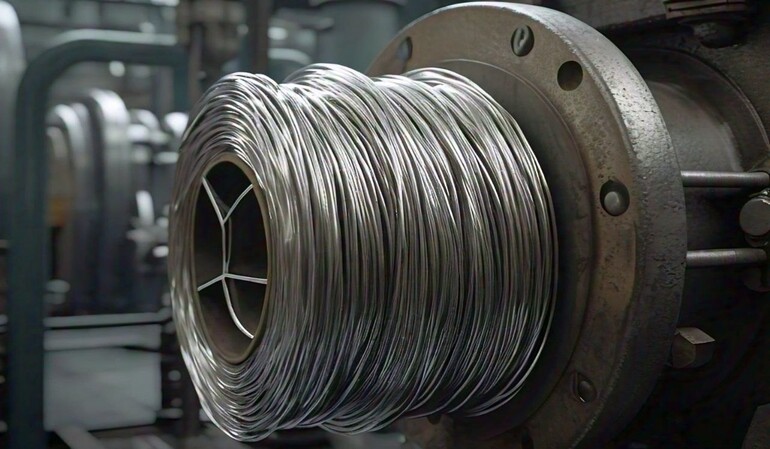- No.3, 327 S.V.P.Road, Makharai House, Mumbai- 400004, INDIA
- sales@ariesalloys.com
Nickel Alloy Wire Blog
- Home
- Nickel Alloy Wire Blog

The Story of Nickel Wire: Connecting Innovation and Strength
A Tale of Discovery and Advancement
In the heart of an advanced aerospace manufacturing facility, a young engineer named Sarah faced a perplexing challenge. The electrical circuits in the spacecraft components she was designing required a material that was not only highly conductive but also resistant to extreme temperatures and corrosion. Traditional copper wires were failing under the harsh conditions of space travel, leading to short circuits and failures.
One evening, while researching alternative materials, Sarah stumbled upon Nickel Wire. Intrigued by its exceptional properties, she decided to explore its potential further.
Why Nickel Wire Became the Ultimate Solution
As Sarah dived into the properties of nickel wire, she realized that it had everything she needed:
- Corrosion Resistance: Could withstand oxidation and exposure to harsh environments, including outer space.
- High Electrical Conductivity: Ensured stable performance in electronic applications.
- Superior Strength & Durability: Maintained integrity even under high stress and vibrations.
- Heat Resistance: Withstood extreme temperatures, making it perfect for space applications.
- Ductility & Flexibility: Allowed easy integration into intricate spacecraft designs.
As Sarah dived into the properties of nickel wire, she realized that it had everything she needed:
- Corrosion Resistance: Could withstand oxidation and exposure to harsh environments, including outer space.
- High Electrical Conductivity: Ensured stable performance in electronic applications.
- Superior Strength & Durability: Maintained integrity even under high stress and vibrations.
- Heat Resistance: Withstood extreme temperatures, making it perfect for space applications.
- Ductility & Flexibility: Allowed easy integration into intricate spacecraft designs.
Transforming an Industry
Sarah proposed the use of nickel wire in the new spacecraft designs. After rigorous testing, the results were outstanding—nickel wire provided reliable conductivity, withstood extreme conditions, and improved the overall efficiency of the electrical systems. The breakthrough led to its adoption not only in aerospace but also in other critical industries such as:
- Electronics & Electrical – Used in electrical contacts, connectors, and battery components.
- Medical Industry – Applied in medical implants and diagnostic devices.
- Chemical & Petrochemical – Essential in filtration systems, heating elements, and chemical processing.
- Welding & Metallurgy – Utilized in welding electrodes and resistance welding applications.
Sarah proposed the use of nickel wire in the new spacecraft designs. After rigorous testing, the results were outstanding—nickel wire provided reliable conductivity, withstood extreme conditions, and improved the overall efficiency of the electrical systems. The breakthrough led to its adoption not only in aerospace but also in other critical industries such as:
- Electronics & Electrical – Used in electrical contacts, connectors, and battery components.
- Medical Industry – Applied in medical implants and diagnostic devices.
- Chemical & Petrochemical – Essential in filtration systems, heating elements, and chemical processing.
- Welding & Metallurgy – Utilized in welding electrodes and resistance welding applications.
Grades & Chemical Composition of Nickel Wire
Different nickel wire grades cater to specific industrial needs. Below is a table showing some of the most commonly used nickel wire grades and their chemical composition:
Grade |
Nickel (Ni) |
Chromium (Cr) |
Iron (Fe) |
Manganese (Mn) |
Carbon (C) |
Silicon (Si) |
Copper (Cu) |
Molybdenum (Mo) |
Cobalt (Co) |
Titanium (Ti) |
Aluminum (Al) |
Nickel 200 (UNS N02200) |
99.0 min |
- |
0.40 max |
0.35 max |
0.15 max |
0.10 max |
0.25 max |
- |
- |
- |
- |
Nickel 201 (UNS N02201) |
99.0 min |
- |
0.40 max |
0.35 max |
0.02 max |
0.10 max |
0.25 max |
- |
- |
- |
- |
Inconel 600 (UNS N06600) |
72.0 min |
14.0-17.0 |
6.0-10.0 |
1.0 max |
0.15 max |
0.50 max |
- |
- |
- |
- |
- |
Monel 400 (UNS N04400) |
63.0 min |
- |
2.5 max |
2.0 max |
0.30 max |
0.50 max |
28.0-34.0 |
- |
- |
- |
- |
Hastelloy C-22 (UNS N06022) |
Balance |
20.0-22.5 |
2.0-6.0 |
0.50 max |
0.015 max |
0.08 max |
- |
12.5-14.5 |
2.5 max |
- |
- |
A Lasting Impact
Thanks to Sarah’s innovative thinking and the incredible properties of nickel wire, space travel became safer and more efficient. Other industries soon followed suit, incorporating nickel wire into their products to enhance performance and longevity.
Upgrade to Nickel Wire Today!
At Aries Alloys, we provide top-quality Nickel Wire that ensures strength, reliability, and durability in the most demanding environments. Whether you’re in aerospace, electronics, or the medical field, we have the right wire for your needs. Contact us today and experience the strength of Nickel Wire in your applications!
Thanks to Sarah’s innovative thinking and the incredible properties of nickel wire, space travel became safer and more efficient. Other industries soon followed suit, incorporating nickel wire into their products to enhance performance and longevity.
Upgrade to Nickel Wire Today!
At Aries Alloys, we provide top-quality Nickel Wire that ensures strength, reliability, and durability in the most demanding environments. Whether you’re in aerospace, electronics, or the medical field, we have the right wire for your needs. Contact us today and experience the strength of Nickel Wire in your applications!
